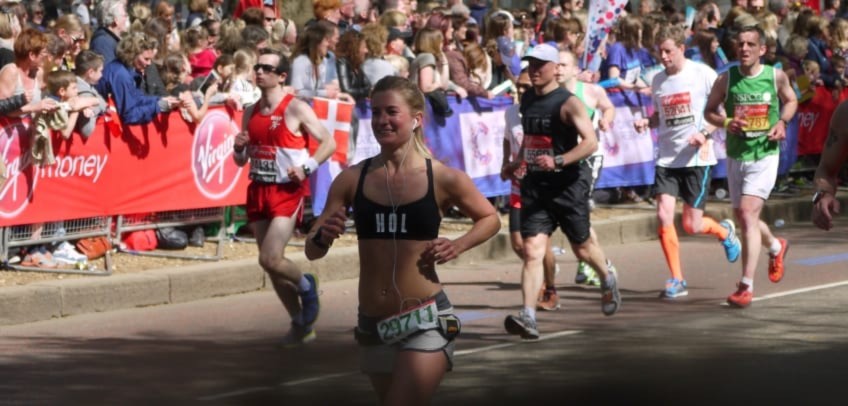
7 Great Ways To Prepare For A Marathon Run
As the best place to find home gym equipment reviews, at Mygymexpert we know that exercise routines have changed in the modern world. That includes running. People run according to how much time they have instead of distance. Aside from balancing family responsibilities, keeping up with work demands and finding leisure time for rest and relaxation, you'll also need to prepare for a marathon in the best way possible.
Why Is Running A Preferred Hobby by Most People?
The benefits spill over to other life aspects. Setting up run sessions hone our organizational skills. It allows us to become more productive while improving our multi-tasking skills. You get regular doses of feel-good hormones dopamine and endorphin's, which certainly helps keep stress at a manageable level.
What Are The Downsides To Endurance Running?
All types of training has its drawbacks, I don't think I have ever met a runner who hasn't had some form of injury such as shin splints, Achilles tendinitis, groin or lower back pain. Which is strange considering that when you look at long distance, we’re pretty much made for it. There is one thing we do better than any animal on the planet, they kick our butts at speed, strength and power; but we have one special move... we sweat. We sweat better and more efficiently than all the animal kingdom, we can run and cool ourselves at the same time, unlike a horse for instance that would need to stop to cool off. Pre-agricultural man would of had to travel large distances for necessities, even the elderly and weakest would also be able to clock up the miles each day. Whether it’s comfortable footwear, diet or just a sedentary lifestyle, it seems like we’re just not that good at it anymore. Office workers struggle to get even 3-4 thousand steps per day and when then try they end up exhausted and injured.

So How Can Busy Working People Prepare For A Competitive Marathon Run?
If you’re going from completely sedentary with a poor level of fitness do not look to compete for at least 6 months, a marathon is an extreme event, it’s tough on your body and mind. Please be honest with yourself, if you were fit when you were young but have hardly moved off the couch for the past ten years and you’re looking to get straight into running at distance you'll end up injured and demotivated. Training for a marathon whilst working full time will be tough but luckily we have a few tricks to help you get prepared no matter how busy your schedule.
Here are 7 tips to get you started:
1. Run Just Enough
Staying healthy should be your top priority when you plan to run a marathon to the finish. Training hard each day will be wasted when you get injured or sick. The base requirement of perceived exertion while running is to have a slightly under-trained stature while keeping a healthy and fit frame. Striking the right balance between the two is the key to success, if you’re running until your last gasp it’s likely you’ll experience DOMS for the next few days which could potentially push your training back. Delayed Onset of Muscle Soreness (DOMS) is the ache in the muscle you get when you have pushed your body further than before.
 Don't increase the weekly running mileage more than 10% while building your base mileage. There's no need (and probably no time) to train everyday for a whole week. Busy people train smart. An optimized schedule of 3 to 5 runs per week, with the majority of the runs at a relaxed pace is your best answer. Sure, you have limited runs, but you will have to make the most of it. A runner facing limited mileage can certainly compensate by focusing on tempos, fartleks, intervals, hills and progression runs at a set rotation. The sprint training alternatives also have added benefits other than time saving, they can help reduce the stress on your joints and tissue, they can keep you motivated through offering a different type of challenge and if you’re not looking to lose any weight it can help you keep hold of some muscle mass which will be essential for injury prevention and performance.
Don't increase the weekly running mileage more than 10% while building your base mileage. There's no need (and probably no time) to train everyday for a whole week. Busy people train smart. An optimized schedule of 3 to 5 runs per week, with the majority of the runs at a relaxed pace is your best answer. Sure, you have limited runs, but you will have to make the most of it. A runner facing limited mileage can certainly compensate by focusing on tempos, fartleks, intervals, hills and progression runs at a set rotation. The sprint training alternatives also have added benefits other than time saving, they can help reduce the stress on your joints and tissue, they can keep you motivated through offering a different type of challenge and if you’re not looking to lose any weight it can help you keep hold of some muscle mass which will be essential for injury prevention and performance.
2. Commitment
Most marathon runners stick to a training plan length of 12 to 20 weeks. Having a training partner can be great, as they can push you to a hundred percent each run. When you finally decide to train for a marathon, then it would be best to fully commit to it. There's a lot of creative ideas you can use. Post motivational quotes on your bathroom mirror so you can see each morning. Create a rocking playlist made especially for running. Use fitness centers and gyms if traveling for work. Install a treadmill in your office. You can also use a spare room and convert it into a home gym.
There are plenty of apps and gadgets available, it’s easier than ever before to stay motivated. RunKeeper for instance helps you track your run in real time, storing your data and helping you set and reach new goals. It also helps you become part of community, holding you accountable and allowing you to push yourself with the help of others.
3. The Long Run
The long run is one of the most important parts of training. If you don't have much time, then it would be best to focus on this aspect. Do the long run once a week in order to avoid over-training. The other runs are there to keep you healthy and prepared. The relaxed pace allows you to be more confident in your stride. Moreover, it lets your body adjust to the longer distances. But be cautious, for some the long run will be half a marathon and for others it will be a 5k, this is why it is important to listen to your body and customize your training regime on how you’re feeling rather than just copying a set routine of your favorite runner.
The long run can get you on your feet for three hours and more. You'll become accustomed to standing up instead of sitting down for long periods of time. Long runs should be intersped with short and medium run sessions. Short runs can be around the 3 to 4 mile length and are done to improve cardiovascular functions. Medium runs can be around the 7 to 8 mile length and should be fast-paced.
Science of Marathon Running [Video]
4. Elliptical Trainer and Treadmill
Treadmills and the elliptical machines are currently some of the most popular exercise machines available today, manufacturers have truly excelled in the art of making high performance and motivational machines that can keep you entertained for hours. Either of them can give you a complete cardiovascular workout and improve your aerobic capacity to greater levels when used consistently. The treadmill is obviously more specific to your needs for a marathon but the elliptical can offer a lower impact option if your devoted to heavy road runs.
You get a full set of controls and speed settings with a treadmill like the one in our review of the Sole F85 Treadmill. Some have the controls on the armrest for convenient changes helping you to not lose your running rhythm. You get a spacious running area some with adjustable belt comfort to mimic either hard or soft terrain. Having one at home means you won't have an excuse to slack off if the weather is a bit to extreme for you. You get the convenience of running no matter how hard it might be raining outside. A treadmill ensures you still get to check off items on your training goal and all your data is easily tracked.
How about the elliptical trainer? It works the same way. Just put your feet on the pedals, and grab the handles. Start swinging your legs in a backwards-forwards motion, which sets off the platform in a gliding movement. The motion itself provides a low-impact, yet effective workout. Just make sure you're on the right posture to gain the maximum benefits. If you wish to simulate real-life running conditions, set the elliptical machine to a deck and belt setting of .5 to 1%. Home elliptical equipment has come on greatly the past few years, brands have invested in biomechanics experts to to help get a workout on par with running.
iFIT software is also compatible with some machines, this membership is essential if your looking to stay on the machine for a long time. It gives you hundreds of different routes, tracks, cities and countries for a virtual reality running experience that lets you explore the world.
Ulitmate NYC Marathon Secrets [Video]
5. Gear Up
Technology in the endurance market is vast and ranges from clothing and gadgets to recovery and sleep aids. First and foremost find a running trainer you’re comfortable in, if your getting any type of rubbing or foot pain seek professional help. Trainers can be made to fit these days, they can cater for flat feet or high arches giving you the appropriate support in the right places. You can even find help on how to tie them properly so that you don't get blisters. Lightweight compression clothing can also give you an edge, any extra weight you carry will hinder your performance. The material also needs to manage your body's temperature regulation. One good tip from the experts is that you shouldn't try something new on the day of the race.
Recovery tools such as TriggerPoint therapy balls and foam rollers can be used to give self massage relief and to keep you free of tension. Remember endurance running will have its drawbacks and if you don't manage it right you won’t last the distance.
6. The Right Nutrition
A common tagline in running is that food is fuel, which is not really true. The human body runs on chemical energy and the efficiency of this system relies on you having a balanced diet that reduces the possibility of nutrient deficiencies as much as possible. Carbs are important- around 60 to 65 percent of what you eat should come from complex carbohydrates. Eat foods such as pasta, wheat bread, yams, beans, potatoes and fruit. As you run and after, replenish energy by topping up on carbohydrate gels and sports drinks.

Around 12 to 20 percent of your diet should be provided by protein. Eat lean beef, peanut butter, fish, eggs and chicken as they contain lots of protein. Eat more when you have DOMS and try to use a variety of different sources.
The rest of your diet should include fats such as nuts, oils, avocados and cheese. These are handy additions to your diet as they are packed full of calories, which your going to need as so much activity means you need to eat a lot of calories to keep your going and to maintain your metabolism. If you don't eat enough, you’ll be weak, ill and unable to run.
It's a no-brainer to stay hydrated at all times when training. Eight 8-ounce glasses of water should suffice, you can always add electrolyte to ensure adequate hydration. Also, you lose plenty of minerals as you sweat and pound the pavement. A multivitamin coupled with vitamin C should optimize your performance and recovery.
7. Rest and Recovery
Training for a marathon is not actually all about running. You will need to start to get to know your body, its strengths, weaknesses and limitations, if you fail to learn how to rest and recover it is a certainty that you will get injured. For every hour you train set aside at least 30 minutes of recovery work; this can include stretching, massage,. meditation, foam rolling or even things that just relax you such as a long hot bath, a manicure, pedicure or a yoga class. If you have no time opt for some breathing exercises or even a few chapters of your favorite book.

8. Bonus Tip - Game Day
On race day try not to change your routine or try anything new, training is preparation and game day is a chance for you to show what you’ve learned and apply it. On the morning of the race make sure you’re hydrated, electrolyte tablets are an excellent addition to your water bottle. Make sure your breakfast is the same as what you have been eating before your practice runs, they must have some form of carbohydrate, the starchier the better. If you run to music make sure your player is charged, playlist is loaded and headphones are in working order. During the race make sure you run your race, don’t get thrown by eager people sprinting out of the gate, stick to your plan. Once the race is finished it’s time to grab a high sugar sports drink and replenish, you’ve earned it. Make sure after the race you take a good few days or even a week to recover before training again.
Recommended Marathon Running Reading
Born To Run by Christopher McDougall
“Isolated by Mexico’s deadly Copper Canyons, the blissful Tarahumara Indians have honed the ability to run hundreds of miles without rest or injury. In a riveting narrative, award-winning journalist and often-injured runner Christopher McDougall sets out to discover their secrets. In the process, he takes his readers from science labs at Harvard to the sun-baked valleys and freezing peaks across North America, where ever-growing numbers of ultra-runners are pushing their bodies to the limit, and, finally, to a climactic race in the Copper Canyons that pits America’s best ultra-runners against the tribe. McDougall’s incredible story will not only engage your mind but inspire your body when you realize that you, indeed all of us, were born to run.”
I hope you enjoyed this, our first in a series of training articles from Mygymexpert.com, the best home gym equipment reviews on the web. Please go ahead and leave a comment below. I will replay as soon as I can. Thanks!
Add new comment